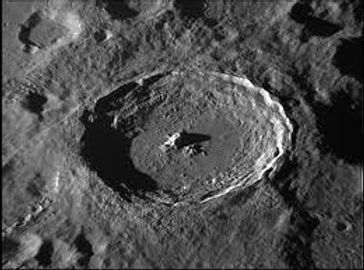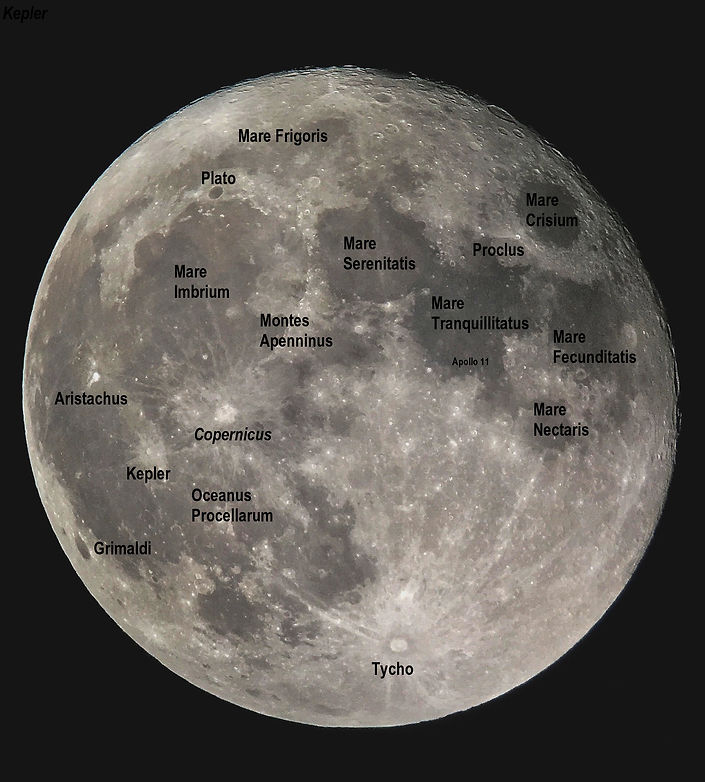


A PRIMER for MOON WATCHING!
I’m changing course away from Deep-Sky Objects this month and target our closest celestial neighbor: the MOON.
The beautiful full moon image produced by my astronomy student, Tara Campbell, last month allows the major features to be identified.
These features here are easily seen by using BINOCULARS and many with unaided eyes. Give it a try and use this map. Full Moon will be December 13th, this month.
Copernicus: Beautiful rays extending symmetrically around the 58 mile diameter terraced crater
Tycho: A young crater, about 100 million years old. The most impressive rayed crater on the moon. 63 Mile Diameter
Aristarchus: A very bright crater due to high reflectivity. Has a teardrop shape.
Plato: A dark, ancient crater, filled with solidified lava from the lava flows during the early moon formation. Diameter 64 miles.
Montes Apenninus: Striking mountain range 372 miles long and highest peak is 16,000 ft.
Proclus: An interesting crater with rays extending in two directions. Very bright crater on the edge of Mare Crisium.
“Most maria (sea in Latin) are named for human emotions (Mare Tranquilitatis = sea of tranquility). They are lava ‘seas” that solidified 3.5 billion years ago.
Can you find the location on Apollo 11 landing site? Happy Moon Watching!
--Hal Jandorf
Observer's Corner for December
Tyco Crater Close Up

